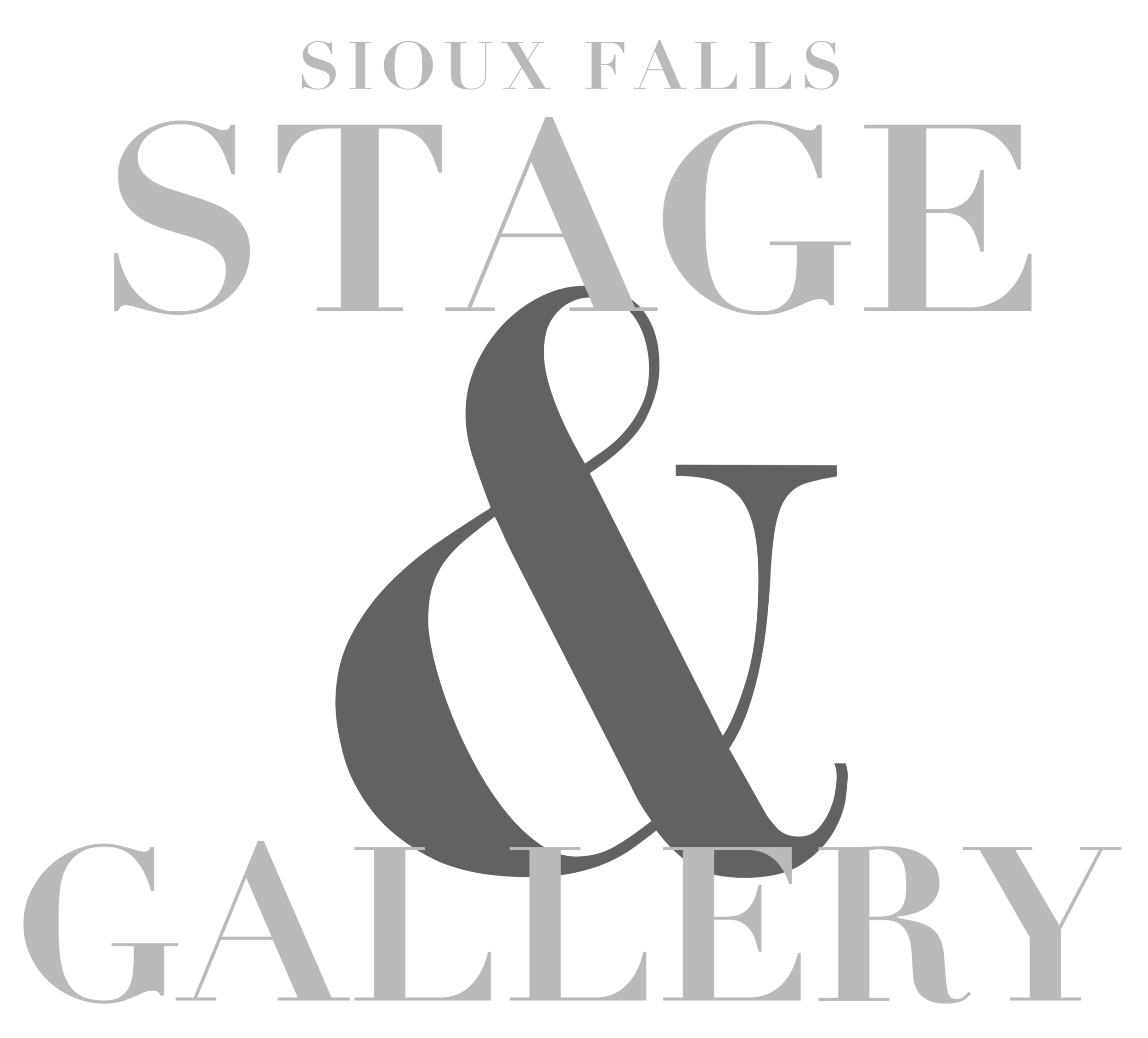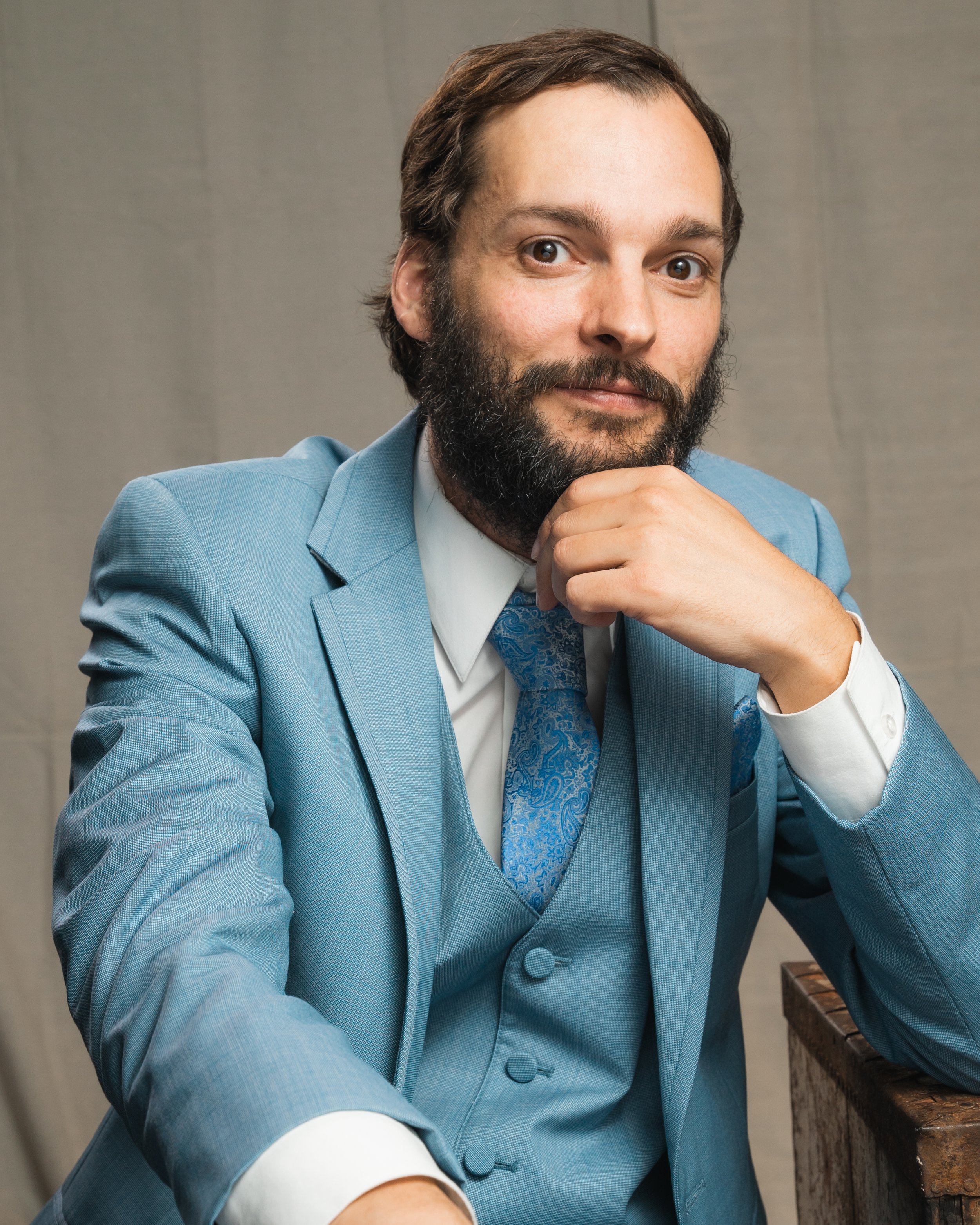Pulling Back the Curtain
When it comes to making the proverbial magic happen, it’s not always what you see on stage that’s bringing everything across the finish line. We grabbed some time with some backstage movers and shakers in the local performing arts scene to get to the heart of what makes Sioux Falls such a thriving locale for artistic craft.
Pictured: Hailey Schmidt, visual & performing arts recruiter & coordinator for University of Sioux Falls (Credit: Peter Chapman)
What do you find most gratifying about being behind the scenes?
Hailey Schmidt: I think as a graduate of University of Sioux Fals (USF) and having spent a lot of time on the stage there, I know exactly how the students are feeling. And I think what’s interesting with students is not only are they performing a show, but they’re also going to school, and most of them have jobs and they just have so many things going on. I know how incredibly stressed so many of them are, and so I am always just so proud to see them get up on stage and do something that a lot of their peers are not doing.
Kristina Harris Jackson: I like being in the background, because I don’t necessarily have a lot of artistic talent that I have developed, but it keeps me connected to the arts, which I love. Being kind of art-adjacent. And writing and surrounding myself with talented people who make beautiful music has been such a great outlet.
Matt Cook: I love being a a facilitator. For me, theater or visual art are all in how you look at it. And lighting designers, we have the role of telling the audience where to look, helping guide the theatrical process. I get to help show off all the hard work other people have done. I get to help show off the costumes, the actors. It all kind of sparkles.
Eli Show: You definitely have to be an appreciator of art to be in the background, because it is a lot about appreciating.
Anna Crawford: I like how everybody collaborates to make a show happen. I love it when it’s calm before the show and then all of the sudden there’s the storm. And you see it come alive. I get a lot of satisfaction from that moment.
What about Sioux Falls inspires your pursuits?
MC: I think it’s its inclusivity. Yes, there are performers and technicians and administrators In town with phenomenal résumés and great talent, but nobody seems to be saying, “You’re not good enough, you’re not qualified enough.” It’s a very collaborative environment that’s really trying to build each other up, I think.
KHJ: So many people have their day jobs here and then they do something fun artistically on the side. In larger cities, it’s just logistically a lot harder to have the ability to do that. You get to keep your joy throughout your life, and I think it makes people more interesting. It just brings a lot more flavor.
Pictured: Kristina Harris Jackson, co-founder & co-producer since late 2020 of the Midtown Coffee Radio Hour (Credit: Peter Chapman)
ES: I feel like, since we’re a smaller city, where you’re maybe not as afraid to try or you know who to talk to, you just jump in.
KHJ: I call Sioux Falls the DIY town for everything people, especially in the arts, just do for themselves and make happen.
HS: I would use the word “approachable,” which I think fits in well with the with the other themes we’re working with here. And I say that because I work with a lot of students who are coming from towns that are much, much smaller than Sioux Falls, and they’re used to being involved in every single activity. Oftentimes at USF we’re able to facilitate something pretty similar. They’re able to pursue a lot of things that they’re interested in, and frequently the arts are outside of their academic interest. So I think getting to bring students to Sioux Falls and have that experience in college, it’s really exciting to tell them that you can stay in Sioux Falls and keep doing that professionally or just keep it a part of your life.
AC: I think our community embraces everybody at every level. We’ll bring you in. We’ll get you started with doing something and then the love of theater just builds from that. It’s especially nice to see children being involved, too, and seeing their love grow. It’s just a wonderful thing to watch.
Pictured: Matt Cook, freelance lighting designer (Credit: Peter Chapman)
Where do you feel local arts collaboration becomes the most valuable?
ES: I think interdisciplinary thought is the way fine art—high art, high thinking—is going. Just clashing those crossover ideas, I think, is where you have the most “eureka” moments. I was a musician for the longest time and then I would love to draw. I think my “eureka” moment in school was bringing music performance to my visual arts work. I want to be a part of giving people exposure to a variety of things and I think that’s what drew me to Headlights (Theater). I think people need to see that it’s totally doable to just deliver a performance in the middle of a parking lot and just go for it. It makes it all feel more attainable.
MC: And how do we keep growing what it means to be local? You always hear the movements of “shop local, buy local.” Well, it’s also, “watch local.”
KHJ: It’s been fun with (Midtown Coffee Radio Hour) to really focus on Sioux Falls and the weird quirks about this place. I didn’t grow up here. I moved here for college and so I still notice things about Sioux Falls that I think are weird and funny, like liturgical dance with lit candles.
[Laughter]
That’s not a thing in Kansas City where I grew up, and it is here and I remember thinking, “what is this?” There are things I notice as a sort of outsider. Teasing out what’s unique and specific about the place in our performances connects so much better to people and becomes a little more universal.
HS: I would say a lot of the recent work at USF had been original work, like Heaven to Heaven in fall 2019 and, in February 2020, Loving Arms, which was written by a USF English professor and playwright. It made students really eager to do that themselves. So we’ve been able to offer a playwriting class the last few semesters that has filled up really quickly. We have a campus event called Playdate, in which students get to write 10-minute plays or one-act plays and do staged readings. One thing that (director of theatre) Joe Obermueller talks about is that oftentimes plays and musicals are written by people who live in New York or New Jersey or maybe California. And they have references about streets and buildings and concepts that we don’t understand. Our students are writing about their specific experiences.
Pictured: Eli Show, artistic director for local professional dance company Headlights Theater (Credit: Peter Chapman)
How has the state of pandemic-era performing arts impacted your approach?
KHJ: I always have had a need for balance in my life. The science I’m in is nutrition, so it has more practical applications. It is so interdisciplinary and sometimes overwhelming. Pursuing something like Midtown was not something I ever thought my family would spend time doing at this point in our lives, but it was really the pandemic that kind of cut everything else off. And for some reason we just thought, “we can do this.” The analytical part of me has focused in on thinking about the whole production side of things, and it was such a release and so exciting and fun to have a finished product and push it out. And it wasn’t perfect. Plus, putting out original work is terrifying. Coming from the sciences, it gave me such an appreciation for all the work that goes into something like this.
MC: I think in a strange way it really helped a lot of us realize what we had. Because all of the sudden the arts were—snap your fingers and just gone. And that’s maybe where practicality pushes you to figure it out. There’s an answer here somewhere. And then it makes you fall in love with it all over again.
ES: I think you also realize how important the crowd is. As a musician, we watched a lot of people do live streams. Losing the crowd, I just feel like you lose a character in the show. It’s important energy that’s sad to see gone.
Pictured: Anna Crawford, frequent theatrical hair & makeup technician in the Sioux Falls area since 1988 (Credit: Peter Chapman)
What impacts can behind-the-scenes technicians have on a stage production?
AC: For me, it’s research. I do that a lot before a show. I consider not only the look but how they’re going to move on the stage if they have costume changes. Anything that might affect their hair and makeup. It all goes into my consideration of the style once I sit down and start working. I like the concept of combining history, theatre and cosmetology all together to make characters come to life.
MC: I don’t think a lot of audience members realize how big that ecosystem is backstage. For every one person on stage, there’s between one, five or 10 people backstage. My college technical director would say an actor who doesn’t tech is unemployed. Everything from the box office staff to the people making sure we can pay the bills to all the technical designers and technicians—it’s a whole world of people who just love making this thing we call theatre.
ES: I also feel like, as we move forward and culture moves on, I need to help get behind and encourage more inclusivity and diversity in producers. I should use my talents to give opportunities to others whose times have come.
MC: I witnessed that backstage at the last USF show I did. I was talking to this girl who was managing props. She’d never done it before and felt like she had no clue what she was doing. But in truth, she was doing a phenomenal job all because someone took a chance on her.






